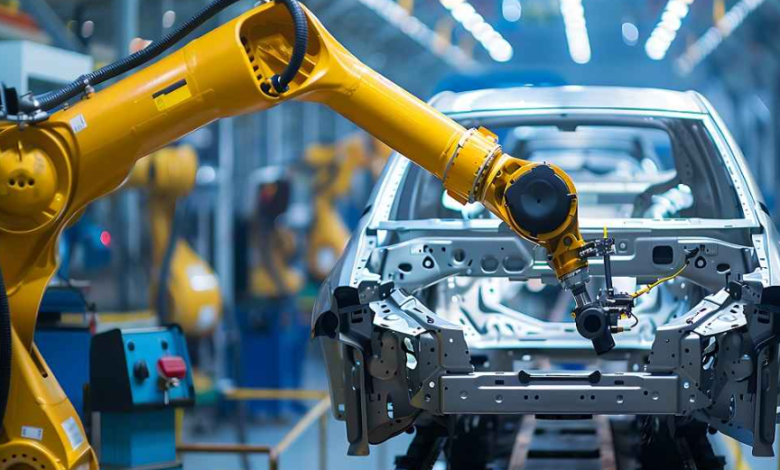Common Challenges In The Automotive Electrical Trade

The automotive industry has evolved rapidly, with electrical systems becoming increasingly complex and essential to a vehicle’s performance and safety. While the integration of technology brings efficiency and precision, it also introduces a new layer of difficulty for professionals in the field. Mechanics in Darwin and around the world face unique electrical challenges that require both technical skill and constant learning. Understanding these obstacles is vital for anyone involved in modern automotive repair or maintenance.
1. Increasing Complexity of Vehicle Electronics
Modern vehicles are computers on wheels. Systems that were once mechanical, such as braking, steering, and even throttle control, now rely on intricate electrical and electronic components. The introduction of advanced driver-assistance systems (ADAS), hybrid drivetrains, and electric vehicles (EVs) has significantly expanded the electrical architecture of cars.
This complexity means technicians must understand not just traditional wiring diagrams, but also data networks, sensors, and control modules. Diagnosing faults often requires specialized scan tools and software, rather than manual inspection. A simple issue, such as a faulty ground wire, can trigger multiple system warnings, leading to time-consuming diagnostic work if the root cause isn’t identified quickly.
See also: When Leaks Can’t Wait: Why You Need a Trusted Emergency Plumber in Hornsby
2. Diagnostic Challenges and Fault Isolation
Electrical problems are notoriously difficult to trace. Unlike mechanical faults, which often produce visible wear or noise, electrical issues can be intermittent, hidden, and influenced by environmental conditions. A vehicle might operate normally one day and then refuse to start the next, leaving both the customer and the technician frustrated.
Accurate diagnosis requires systematic testing using multimeters, oscilloscopes, and scan tools. However, even with advanced equipment, technicians must correctly interpret the data. Fault codes can point to symptoms rather than causes—meaning that experience and reasoning remain just as important as technology. Training in diagnostic strategy is essential to avoid the “parts replacement” approach, where components are swapped out blindly in hopes of solving the problem.
3. Wiring and Connector Failures
As vehicles age, one of the most frequent causes of electrical failure is deterioration in wiring and connectors. Exposure to heat, vibration, and moisture leads to corrosion, short circuits, or open circuits. The compact design of modern vehicles compounds the issue—wiring looms are tightly packed, making access difficult and repairs tedious.
For mechanics, proper repair techniques such as soldering, using heat-shrink tubing, and ensuring good insulation are crucial. Poor workmanship can lead to future failures, potentially posing safety risks. Moreover, identifying wiring faults in vehicles with miles of harnesses requires patience, good documentation, and a solid understanding of circuit logic.
4. Integration of New Technologies
Electric and hybrid vehicles have added an entirely new dimension to automotive electrical work. High-voltage systems present safety hazards that traditional mechanics may not be accustomed to managing. Improper handling of these systems can lead to electric shock or damage to critical components.
To stay relevant, automotive electricians must pursue specialized training and certification for high-voltage safety and EV diagnostics. The demand for skilled professionals in this niche continues to grow, as manufacturers push for electrification across all vehicle classes.
5. Software and Firmware Issues
Many modern faults aren’t hardware-related at all; they’re software-driven. Control units rely on firmware updates to fix bugs, improve performance, or adapt to new components. However, software compatibility problems can arise when updates are incomplete or corrupted.
This dependency on software means technicians must often liaise with manufacturers or authorized service networks for access to proprietary diagnostic platforms. For independent workshops, obtaining legitimate diagnostic licenses can be expensive but necessary to maintain service quality and credibility.
6. Customer Expectations and Communication
Electrical problems often take longer to diagnose and repair than mechanical ones, yet customers may not understand why. Managing expectations, especially around cost and repair duration, is a common challenge. Transparency helps: explaining diagnostic procedures, providing visual evidence, and offering itemized estimates can build trust.
Shops that communicate clearly, provide regular updates, and educate customers about preventive maintenance often gain stronger reputations and repeat business.
7. The Need for Ongoing Training
The automotive electrical trade is in constant evolution. With every new model release, manufacturers introduce changes to system layouts, communication protocols, and component designs. For technicians, continuous professional development is not optional—it’s essential. Training in diagnostics, EV technology, and electronic control systems ensures mechanics remain capable of tackling the vehicles of today and tomorrow.
Conclusion
The modern automotive electrical trade demands precision, education, and adaptability. From diagnosing complex wiring faults to mastering new diagnostic software and handling high-voltage systems, the role of an automotive electrician is both challenging and rewarding. Those who invest in their tools, training, and communication skills will stand out in an increasingly technical market.
Whether working on family sedans, hybrid SUVs, or cutting-edge electric vehicles, today’s technicians must blend mechanical know-how with digital expertise. For mechanics in Darwin and professionals everywhere, staying current with technology and maintaining a commitment to quality workmanship are the keys to success in this demanding trade.




